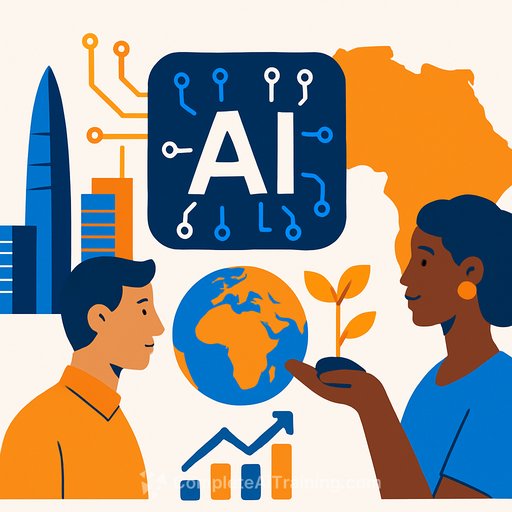AI and the SDGs by 2030: Practical steps for IT and development teams
Artificial intelligence can move the UN Sustainable Development Goals forward, but it can also widen gaps and strain resources if deployed poorly. That was the message shared by Gong Ke, Executive Director of the Chinese Institute of New Generation Artificial Intelligence Development Strategies, during a special CGTN program.
He pointed to a real result in Shenzhen: AI cut battery testing costs by 40 percent, saving energy and materials. At the same time, he warned about two risks teams must manage-growing digital inequality and higher energy use across training and inference.
What this means for engineering leaders
- AI should contribute to clean energy, clean water, health, and inclusive access-or it's technical debt at a societal level.
- Efficiency is now a product requirement: measure energy, carbon, and cost per feature, not just accuracy and latency.
- Access matters: solutions must work for low bandwidth, low compute, and local languages to avoid a wider digital divide.
Pattern to note: the Shenzhen battery case
The reported 40 percent cost reduction in battery testing shows where AI adds immediate value: smarter test selection, earlier fault prediction, and fewer physical cycles. If you handle hardware, energy, or QA, apply AI to prioritize test coverage, simulate outcomes before lab runs, and route only the most informative tests to the bench.
Cut AI energy use without losing quality
- Right-size models: start small, then distill. Use quantization (INT8/INT4), pruning, LoRA, and early-exit heads when accuracy allows.
- Use efficient compute: mixed precision by default, optimized kernels (FlashAttention), TorchInductor/XLA compilers, and batch where possible.
- Optimize data: de-duplicate, stratify, and weight datasets to reduce epochs. Cache features and stream data to avoid waste.
- Carbon-aware scheduling: run batch jobs in regions and time windows with higher renewable supply. Autoscale to zero when idle.
- Track tCO2e and energy: instrument training and inference jobs; set budgets per model and per release. Make energy a CI gate.
- Push inference to the edge where feasible to reduce backhaul and latency; reserve heavy jobs for batch pipelines.
Design for inclusion and close the digital divide
- Build low-bandwidth modes (text-first, compressed payloads, resumable downloads). Support offline-first and progressive sync.
- Target low-spec devices: on-device models, quantized runtimes, and adaptive UX that degrades gracefully.
- Language access: train or fine-tune for local languages; consider lightweight translation at the edge.
- Alternative access: SMS/USSD for critical services; simple IVR for areas with limited literacy or connectivity.
- Capacity building: publish docs and datasets, run train-the-trainer programs, and sponsor cloud/GPU credits with clear learning paths.
Governance and safeguards you can ship
- Risk reviews at model and feature level. Maintain model cards and data statements with provenance, licensing, and known limits.
- Privacy by default: minimization, retention limits, differential privacy where needed, and federated approaches for sensitive data.
- Fairness and reliability: evaluate across demographics and contexts; add guardrails, rate limits, and fallback flows.
- Incident readiness: red-team before launch, log decisions, and define a rollback plan with kill switches.
- Procurement: ask vendors for energy metrics, PUE/WUE of hosting, and evidence of renewable coverage.
Metrics that keep teams honest
- tCO2e per training run and per 1k inferences.
- kWh per token or per prediction; GPU-hours per release.
- PUE and renewable percentage of regions used; water usage effectiveness where disclosed.
- Access metrics: latency and success rates on 2G/3G, low-memory devices, and across languages.
Policy signals worth tracking
China's push for "digital and green dual transformation" is a clear call to pair AI expansion with efficiency and renewables. Efforts highlighted include a UN-backed resolution on AI capacity building and the Engineering Capacity Building for Africa program-both focused on infrastructure and talent so benefits are shared, not concentrated.
Where to go deeper
Bottom line: treat sustainability and access as first-class requirements. Build smaller, measure everything, and ship features that save energy and include more people.
Your membership also unlocks:






